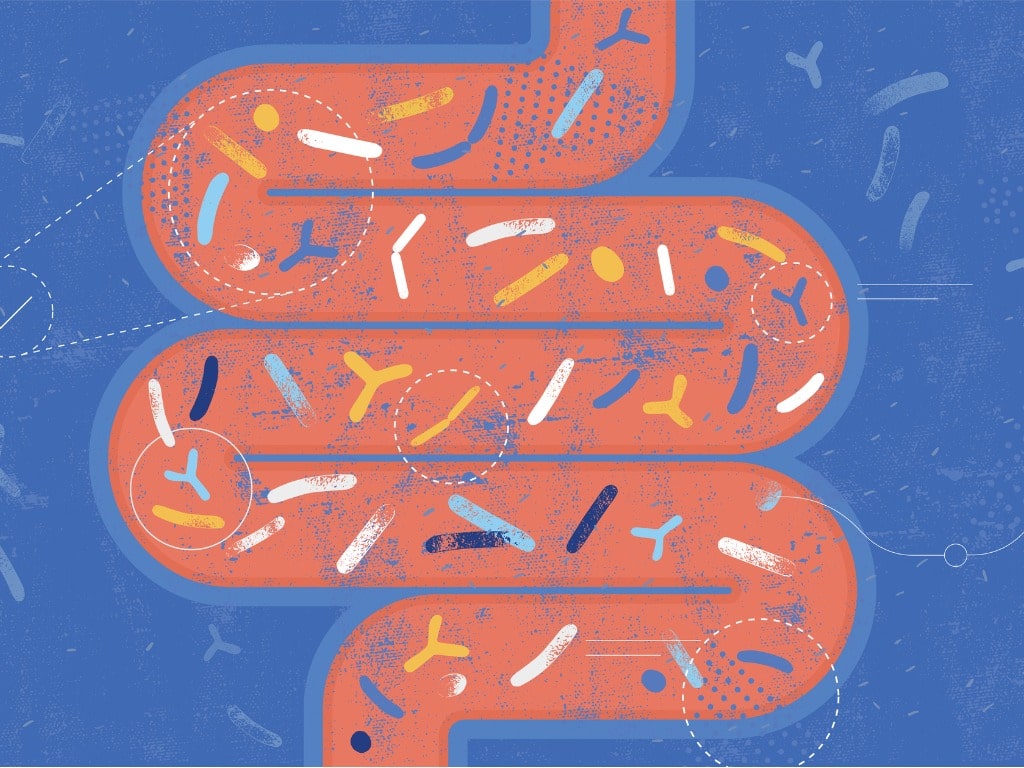
Our environment is sick and it may be making us sick too.
Each year thousands of man-made chemicals are added into our environment with little knowledge as to the potential long-term side effects on health.
One of the chemicals that has received increasing attention in the last five years is Bisphenol A (BPA).
Should you be concerned?
Sources of BPA
Over six billion pounds of Bisphenol A are produced each year and it is estimated that 100 tons of it is released into the atmosphere, mostly through industrial waste water (1; 2).
Public concern, however, has been over its widespread use in “hard” polycarbonate plastics (including many baby bottles, pacifiers, & sippy cups) and epoxy resins found in the linings of canned food, canned beverages, dental sealants and even flame retardants used in electronics. (3)
Health Concerns Regarding BPA
BPA is known to exert weak estrogen activity in animal and human studies. In fact, BPA has been shown to be mainly responsible for estrogenic activity leaching from our landfills into the surrounding ecosystem. (4)
Similar concerns exist with weak estrogen-like compounds in soy and popular supplements (5) Some clinicians suggest that food chemicals with low estrogenic activity (such as flax and soy) may actually exert some health benefits, while man-made estrogen-like chemicals may be more likely causing harm.
What we know is that up to 95% of individuals tested have levels of BPA in their urine (6). BPA has also been found in breastmilk, amniotic fluid, neonatal blood, placenta, and cord blood (7) and almost all organic and non-organic canned foods, soups, juice, tuna, and green beans contain some BPA.
Bisphenol A is widely categorized as an “endocrine disruptor“. Endocrine disruptors are man-made chemicals that have potential to cause reproductive abnormalities, and some like BPA have been shown to behave like estrogen in the body.
The Environmental Protection Agency (EPA) defines an endocrine disruptor as:
An exogenous agent that interferes with the production, release, transport, metabolism, binding, action, or elimination of natural hormones in the body responsible for the maintenance of homeostasis and the regulation of developmental processes (8).
Simply put, these chemicals disrupt hormone function by mimicking or even blocking the normal activity of hormones.
The Emerging Role of Epigenetics
Epigenetics (“above the gene”) is the science behind how dietary and chemical signals from our environment help regulate how our genes are expressed for better or for worse.
Those changes in gene expression can then be passed to our offspring without any involvement of genetic mutations.
Currently tens of thousands of man-made chemicals are released in to our environment with little to no understanding of their potential impact on human and ecosystem health. Our understanding of how toxins interact with our physiology to produce health effects is growing rapidly. The field of toxicology will be especially affected by advances in our understanding of epigenetics (9).
What is exciting about the research is that we are discovering clues as to how our genetic risk to certain diseases can be increased or decreased through toxin exposure, as well as diet and lifestyle choices.
Endocrine disruptors such as bisphenol A have actually been shown to alter gene expression and cause epigenetic changes in those exposed (10; 11 [emphasis mine]).
In April 2011, a Nature Reviews. Endocrinology article offered this statement:
“Exposure to endocrine disrupting chemicals (EDCs) is associated with dysfunctions of metabolism, energy balance, thyroid function and reproduction, and an increased risk of endocrine cancers. These multifactorial disorders can be ‘programmed’ through molecular epigenetic changes induced by exposure to EDCs early in life, the expression of which may not manifest until adulthood,” (12, [emphasis mine])
Despite widespread excitement in the emerging field of epigenetics, most BPA research has still largely been based on animal models. Despite growing public concern, new guidelines regarding chemicals such as BPA have been slow to develop.
Safety reports on BPA suggest that BPA has a half-life of two hours, with all metabolites being recovered in the urine (13).
I still wonder whether exposures are large and/or frequent enough to overcome the bodies ability to flush it out, and what effect the substance (even at low doses) may have long-lasting effects despite short-term exposures – especially when it comes to genetic expression.
Estimated exposure to BPA tends to be below levels proven to be safe, but in rat models, even low-dose exposure has been correlated with health effects (14, [emphasis mine]).
BPA may actually exert different effects at both very low and very high dosages (3).
Despite the controversial nature of BPA research, what have these studies shown?
Possible Bisphenol A Health Effects
Fertility, Reproductive Health & Pregnancy Outcomes:
Because of its estrogenic behavior, there has been concern of BPA’s impact on fertility, reproductive health, and pregnancy outcomes.
A 2009 article published in the journal reviewed evidency of BPA’s direct influence on the placenta. The article noted that BPA exposure may be associated with adverse pregnancy outcomes such as:
- preeclampsia
- intrauterine growth restriction
- premature births
- & pregnancy loss (14) and indirect association with recurrent miscarriages (15).
A popular 2008 Canadian documentary called “The Disappearing Male” noted the concern over man-made “endocrine disruptors” and their effect on male fertility. The film noted that male sperm counts have declined 50% in the last fifty years and that exposures during key moments of development can be crucial in determining sex and reproductive health.
There is also evidence that a mother’s exposure to BPA while pregnant can affect the fertility of male children (16) and exposure may also be associated with early puberty in females (17). Long-term risk of excess estrogen exposure for females may include breast, endometrial, ovarian, and colon cancers. In males, BPA is suggested to lower testosterone levels by its effects on the testies and the pituitary (18).
According to the Cleveland Clinic, uterine fibroids occur in 25-80% of women. Although causes are not completely identified, alternative providers tend to blame “estrogen dominance” for their presence.
Signs and symptoms of uterine fibroids may include:
- Disordered menstrual bleeding & severe menstrual cramps
- A feeling of fullness in the lower abdomen
- Problems with urination (frequent/infrequent)
- Pain during intercourse
- Low back pain
- Constipation
- Chronic vaginal discharge
- Infertility
Human studies have shown associations of BPA and similar chemicals with low sperm formation, low testosterone, genital malformation, and a higher incidence of breast cancer (19).
Additionally, BPA may be associated with cryptorchidism (undescended testicles), hypospadias (defect in the opening of the urethra) in males, and miscarriages, impaired fertility, and a disrupted menstrual cycle in females (20).
Pregnancy and Infancy:
Certain groups such as pregnant mothers and young children may be more vulnerable to the effects of BPA (21). (As noted earlier, BPA has been found in breast milk, amniotic fluid, neonatal blood, placenta, and cord blood (7).
Toxic levels in infants and children tend to be higher in concentration due to their small body size & they are considered high risk because of the rapid development of their immune and nervous systems.
Time Magazine noted in May 2011 that BPA exposure in Pregnancy may be connected to Childhood asthma.
There is also the serious concern of genetic changes being induced by toxic exposures to a developing fetus or infant, and that those changes may be less reversible than the effect of toxic exposure in adults (3).
Brain and Nervous System:
Because most brain and nervous system development occurs during the first few months and years of life, young children may be more vulnerable to BPA exposure. Beyond reproductive abnormalities, concern over the potential neurological effects of bisphenol A and exposure during pregnancy and the first few years of life has sparked a fierce political debate over the neurological implications of BPA exposure.
Studies in rats and non-human primates have shown evidence of an association of BPA with a 70-100% loss of nerve synapses in the hippocampus (area of the brain involved in memory) and the spine by blocking normal estrogen and androgen (i.e. testosterone) activity.
Cognitive decline, depression, and schizophrenia are conditions associated with a similar loss of nerve synapses (22).
International publicity and debate over bisphenol A have been re-fueled largely because of recent insights into how BPA may negatively affect the brain and nervous system.
Diabetes and Obesity:
There is a positive association between BPA and similar endocrine-disrupting chemicals with obesity in both human and animal studies (3). Some believe that pre-natal and post-natal exposure to BPA may play a role in weight gain (23). BPA may also increase the number of inflammatory chemicals released from existing fat tissue (24).
Bisphenol A has shown to alter control of blood sugar in both rats and humans and may promote the development of type 2 diabetes (25).
Prostate Health:
Chronic exposure to low levels of estrogenic chemicals like BPA over time increased the rates of prostate cancer in rats (26).
Alterations in testosterone and estrogen levels have been linked to an elevated prostate-specific antigen (PSA) and the potential to promote prostate cancer development (27; 28; 29). Prosta Glan by Progressive Labs is a well-formulated prostate health support.
Thyroid Function:
Some evidence suggests an antagonistic effect of BPA on Thyroid hormone function (30). Additionally, epigenetics may also play a role between endocrine disruptors and thyroid function (12).
Should I Be Worried About BPA?
The European Food Safety Authority released an opinion on BPA in 2008 that because of differences in the metabolism of rodents and humans, rats are likely at greater risk than humans. In 2010, upon push to review their opinion based on an international push to ban BPA from baby bottles, the EFSA reconfirmed their 2008 opinion stating that there was flaws in the research designs that had been used as the rationale for a ban.
A 2011 review published in Critical Reviews in Toxicology, noted the “deadlocked controversy” over BPA. The review supported that the tolerable daily intake of BPA remains set at 0.05 mg/kg per day (50 ug/kg/day). The authors remarked that no adverse health effects have been consistently observed at doses ≤5 mg BPA/kg/day (31).
It’s important to note that the study was partly funded by a BPA interest group
A separate review article published in Reproductive Toxicology in 2007 stated:
We are confident that adult exposure to BPA affects the male reproductive tract, and that long lasting, organizational effects in response to developmental exposure to BPA occur in the brain, the male reproductive system, and metabolic processes. We consider it likely, but requiring further confirmation, that adult exposure to BPA affects the brain, the female reproductive system, and the immune system, and that developmental effects occur in the female reproductive system (32).
More recently, a June 2011 issue of the journal Human Reproduction Update, the authors claimed that there is enough evidence present to take “precautionary actions” regarding women’s reproductive health and endocrine disruptors such as bisphenol A (33).
Additionally, a Harvard study published in April 2011 in Current Opinion in Pediatrics suggested “Even in the absence of epidemiological studies, concern over adverse effects of BPA is warranted given the unique vulnerability of the developing fetus and child. Healthcare providers are encouraged to practice primary prevention and counsel patients to reduce BPA exposures,”(34)
BPA is just one of many sources of endocrine disruption that are becoming ubiquitous in our environment….a small stress here, and a small stress there, and the hypothetical possibility of combination effects have some alternative health professionals concerned.
Despite research claims that BPA is safe at the current guidelines, there is debate over the potential bias of industry-sponsored research.
Other reviews have painted a different story, and consumer pressures against BPA have been building over the last decade.
Uniquely, BPA exposure has been shown a “U-shaped” response curve, meaning an effect is only seen at low and high doses, making it impossible to make conclusions on the effect of low exposure based on high-exposure studies (3), and may also complicate “tolerable intake” guidelines.
As public concern clearly affects both policy and research dollars, it is important to voice any of your concerns as the industry is surely spending money to voice its opinions as well.
The good news is that because of consumer pressure, at least $30 million has recently been set aside to fund ten, two-year studies on the safety of BPA.
Epigenetic influences may take longer than two years to develop. Whether the results of these two-year studies will add to the confusion regarding the safety of BPA is still to be determined, but it’s a good sign that policymakers are listening.
Tips on Avoiding BPA Exposure:
Taking “precautionary actions” can be more simple than you can think:
- Purchase products stored in glass containers
- Eat foods and herbs that support detoxification such as broccoli, cauliflower, brussels sprouts and turmeric.
- Purchase BPA-free baby bottles, pacifiers, and infant feeding cups.
- Avoid the use of #7 labeled plastics.
- Do not microwave or heat food in plastic containers.
- Ensure proper ventilation for rooms & offices containing computers and electronics.
- Do not store food in scratched or damaged plastic containers, or other containers with plastic lining.
- Consider asking a health professional about special urine testing especially if there is a history of reproductive difficulties, uterine fibroids, breast cancer, menstrual abnormalities, or a history of infertility.
Share and find tips with other readers:
How do you reduce personal exposure to man-made toxins? (LinkedIn Discussion Group)



